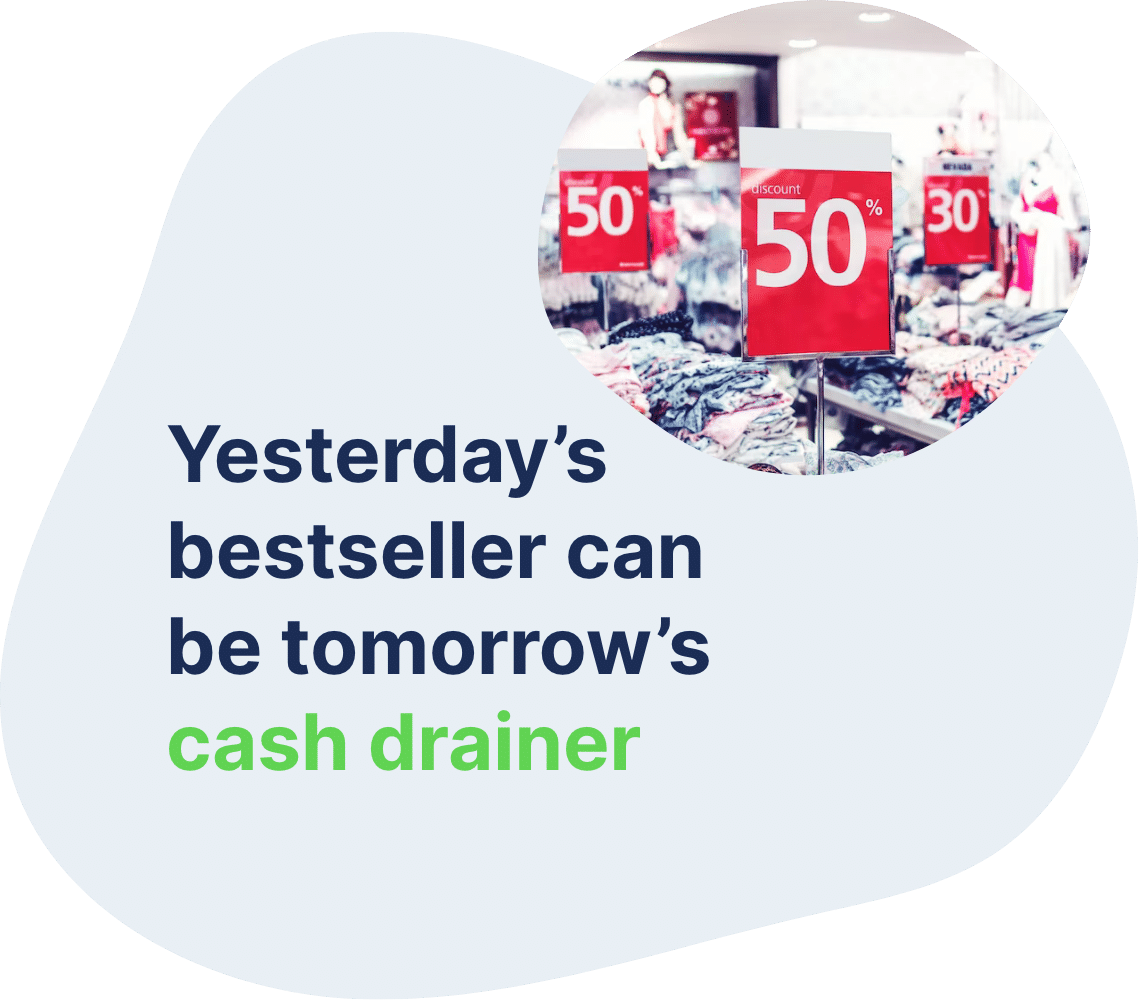Automate your demand forecasting and inventory purchasing
Free yourself from time-consuming, error-prone spreadsheet calculations with Inventory Planner.
With 10+ years experience powering 2,600+ retail brands, Inventory Planner is the market-leading inventory planning tool that always offers reliable demand forecasts and inventory purchasing recommendations you can count on.

Why Inventory Planner is better than spreadsheet-based inventory planning
1
Reliable forecasting - even when markets fluctuate
Forecasts are updated constantly, factoring in seasonality, marketing, abnormal sales spikes and customer demand shifts for ultimate accuracy.
2
Faster, smarter inventory purchasing
Get automated SKU-level buying recommendations that are easy for your whole team to understand. No more over (or under) ordering!
3
Best-in-class overstock report
Insights you won’t get anywhere else that enable you to liquidate excess inventory without having stockouts, like last sold date, overstock units and overstock costs.
4
Multi-location inventory plannin
Get reliable inventory purchasing and warehouse transfer recommendations based on up-to-date forecasts, for each of your locations including your physical stores, warehouses, FBAs and 3PLs.
5
Simple, powerful reports
We turn your complex, siloed inventory and sales data into 200+ meaningful and intuitive metrics (from top level detail to granular SKU-by-SKU analysis).
6
Easy planning for new products
Inventory Planner ‘borrows’ sales data from similar products to predict demand for new items (including size, color, fabric and pattern), slashing the risk of over or under ordering.
7
Bundle, assembly inventory planning
Inventory Planner breaks forecasts down to component level and tells you how much inventory of each component is needed, plus when to order it.
8
Save time creating POs
Place purchase orders in a pinch, directly from your buying recommendations. Pre-set supplier info (currency, minimum order quantity, payment terms) to be automatically applied.
9
Optimize shipping + storage costs
Scale your purchase order based on CBM or weight to max out shipping container or warehouse space and reduce costs.
Go beyond your Excel spreadsheet-based inventory planning
Instant interactive tour
Wondering how it all works?
Instant interactive tour
Faq
Frequently Asked Questions
Integrations
Get connected
Plug in virtually any data, from any source, for powerful insights that are always up-to-date and all in one place.
Shopify
E-Commerce
Amazon
E-Commerce
BigCommerce
E-Commerce
Magento
E-Commerce
Walmart
E-Commerce
Netsuite
ERP
Acumatica
E-Commerce
Quickbooks
Accounting
Xero
Accounting
Snowflake
Data Warehouse
Cin7
IMS
Linnworks
E-Commerce



